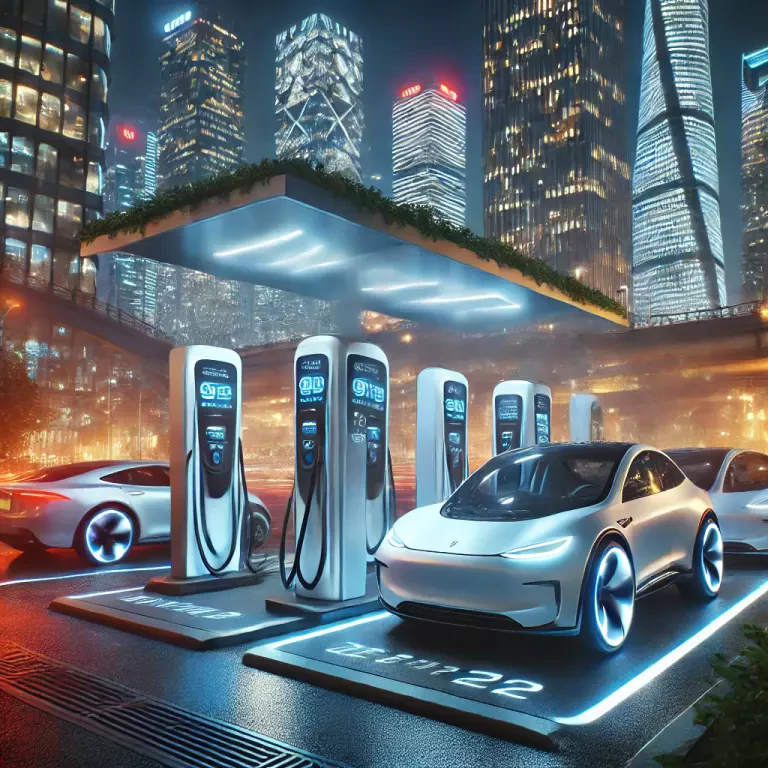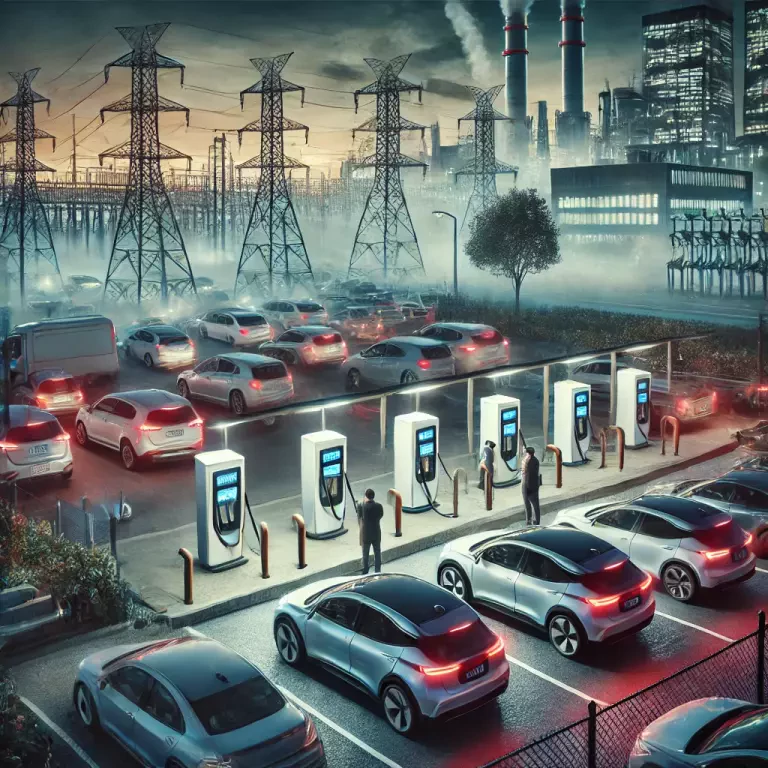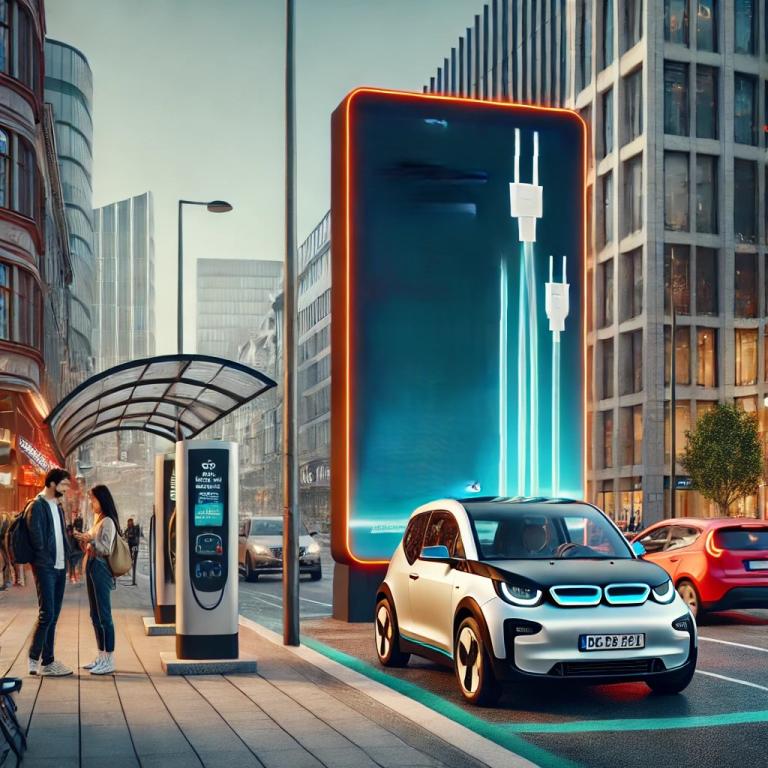The electric vehicle (EV) movement has experienced huge growth throughout North America and the rest of the world in recent years. This sudden surge in popularity is undoubtedly propelled by a growing awareness of climate change, rising gas prices, and advancements in battery technology. Global sales of electric vehicles have reached astounding numbers, signaling a shift from traditional gasoline-powered cars to modern EVs.
As the demand for battery electric vehicles continues to grow, so does the need for sufficient and convenient charging stops. With future growth all but guaranteed and millions of EVs expected to hit the roads in the coming years, effective charging infrastructure development is essential. However, this industry faces several challenges that must be addressed to ensure accessibility and reliability for consumers who are used to the convenience of gas stations.

High Initial Costs and Infrastructure
Installation and Electrical Upgrades
One key challenge that the EV charging industry battles is the high upfront cost of installation and electrical upgrades. Putting up public chargers takes more than just the hardware; it often involves large electrical upgrades to allow the loads to charge entire vehicles. This can be especially expensive for businesses since they may need to work with network providers to upgrade their existing electrical systems.
Urban vs. Rural Disparities in Charging Stations
Another major challenge is the uneven balance of charging stations in the city versus in country areas. While large cities typically have better access to public charging stations, rural regions often need more even basic infrastructure. This gap creates an unfair disadvantage for EV users in the country, making it difficult for potential buyers in less populated areas to adopt electric vehicles confidently. This imbalance must be addressed to bring about broader acceptance and usage of EVs.
Technological and Compatibility Issues
Ensuring Compatibility Between EVs and Chargers
As the market for electric vehicles grows, manufacturers are producing models with varying specifications, battery sizes, and charging needs. Ensuring compatibility between different EV models and many charging stations presents quite a challenge. Various connectors and charging protocols—such as CCS, CHAdeMO, and Tesla’s proprietary connector—complicate matters further. This lack of standardization can lead to confusion among consumers and reduce the overall utility of charging stations.
Advances and Innovations in Charging Technology
Advancements in charging technology promise to fix some compatibility issues, but the constant development of new models can leave the existing infrastructures to be updated. Companies always look for possible upgrades to EV models, such as ultra-fast and wireless charging. These may not be widely used yet, but they must be considered. It's challenging to get the right balance between designing new technologies and still making sure that existing networks can accommodate new vehicles.

Grid Capacity and Energy Demand
Impact on the Electrical Grid
The growth of EV charging stations poses significant challenges to the electric grid. As more charging stations are constantly being built, charge point operators must balance the increased demand for electricity, particularly during peak usage times. It can take effort to figure out the best resources to accommodate customers without overloading the system. After all, if too many EVs charge simultaneously, it can lead to blackouts, service disruptions, and pressure on the power grid.
Integrating Renewable Energy and Managing Peak Demand
The transition to electric vehicles offers an excellent opportunity to experiment with renewable energy sources. However, this option can present some things that could be improved. For example, coordinating charging sessions with renewable energy production—like solar panel generation—is ideal but complex. Also, grid operators must form strategies to manage charging in high demand. This could be done by implementing time-of-use pricing or giving discounts on off-peak charging. This would allow EV users to charge their vehicles without straining the power grid.
Regulatory and Policy Hurdles
Navigating Regional Variations in Regulations
The regulations for EV charging infrastructure can be complicated and will most likely change from one region to another. National policies may push for widespread adoption, but local ordinances and building codes can hinder charging station installation. These regulations create confusion and can keep businesses from investing in the necessary charging infrastructure development. These complex regulations and requirements must be clarified so everyone involved has a good understanding. Again, a joint approach is important for developing charging networks.
Incentives and Subsidies for Charging Infrastructure
Different government incentives and subsidies play a crucial role in encouraging investment in EV charging infrastructure. However, these financial aids can vary greatly depending on your location.
An ongoing commitment to supporting the installation of charging stations is desperately needed to truly help the industry's growth. Policymakers must find a way to bridge the gap between federal support and local implementation. This will ensure that funding flows smoothly into these extensive projects.

Consumer Behavior and Market Viability
Public Awareness and Range Anxiety
Consumer behavior may have the most significant impact on the growth of EV charging development. Public awareness of the benefits of EVs and charging infrastructure needs to be more balanced. Range anxiety—concerns about running out of battery power before reaching a charging station—is a common concern holding people back from adopting electric vehicles. If consumers are educated about the ever-growing network of charging stations and the advances in battery technology, many of these fears will vanish.
Many people are simply unaware of the range improvements that have already been made in modern EVs and the growing national network of charging stations that are in place to support them. These opinions can be shifted through informative marketing campaigns that communicate the real-world effectiveness of EVs and the expansion of public charging infrastructure. Only then can people be driven to a greater acceptance of EVs.
Exploring Different Business Models and Profitability Challenges
The EV charging industry is still very new, and many business owners are being prompted to explore strategies that could help drive sales. Key options include subscription services, pay-per-use charging, and partnerships with retailers or municipalities to provide charging solutions. However, each model presents its own set of challenges. There are things like the initial capital investment of hardware and installation, ongoing maintenance costs, and determining competitive pricing structures that appeal to consumers while ensuring a good return.
Additionally, fluctuating energy prices and whether to charge based on time or kilowatt-hours can further complicate things. Businesses have to navigate the complex economics and customer preferences to find a balance that will promote steady income. Researching and piloting different models in various locations will be essential for identifying long-term strategies to encourage the EV charging sector's growth.

Conclusion
The EV charging industry has seen significant growth and is likely to gain even more popularity as time passes. Still, it faces challenges that must be overcome to succeed in the long term. From influencing public awareness to navigating complex business models and profitability concerns, industry stakeholders must work together to create a reliable charging infrastructure. Consumer education should be prioritized, while at the same time, businesses must explore different strategies to lay the groundwork for a more sustainable transportation future. Tackling these obstacles will enhance the electric vehicle market, contribute to a cleaner environment, and reduce fuel costs.
At A-1 Auto Transport, we can handle your shipping needs professionally but personally. Check out our shipping options and get a free quote today!






 Share on Facebook
Share on Facebook Share on LinkedIn
Share on LinkedIn Share on Twitter
Share on Twitter




 Google
Google  Instagram
Instagram  Trustpilot
Trustpilot 



